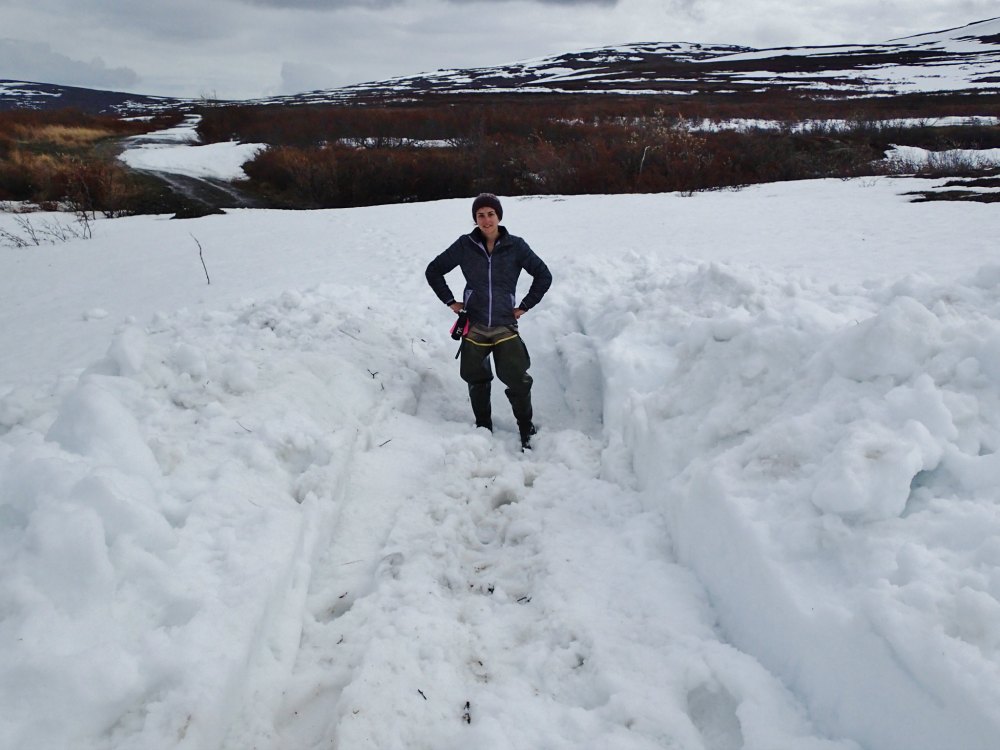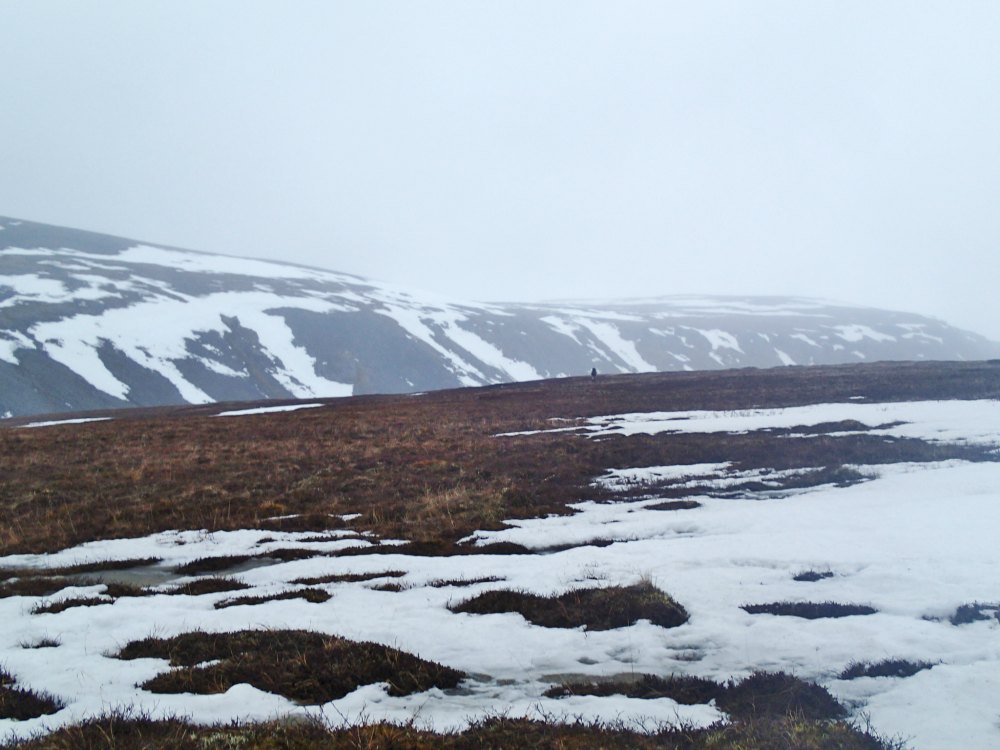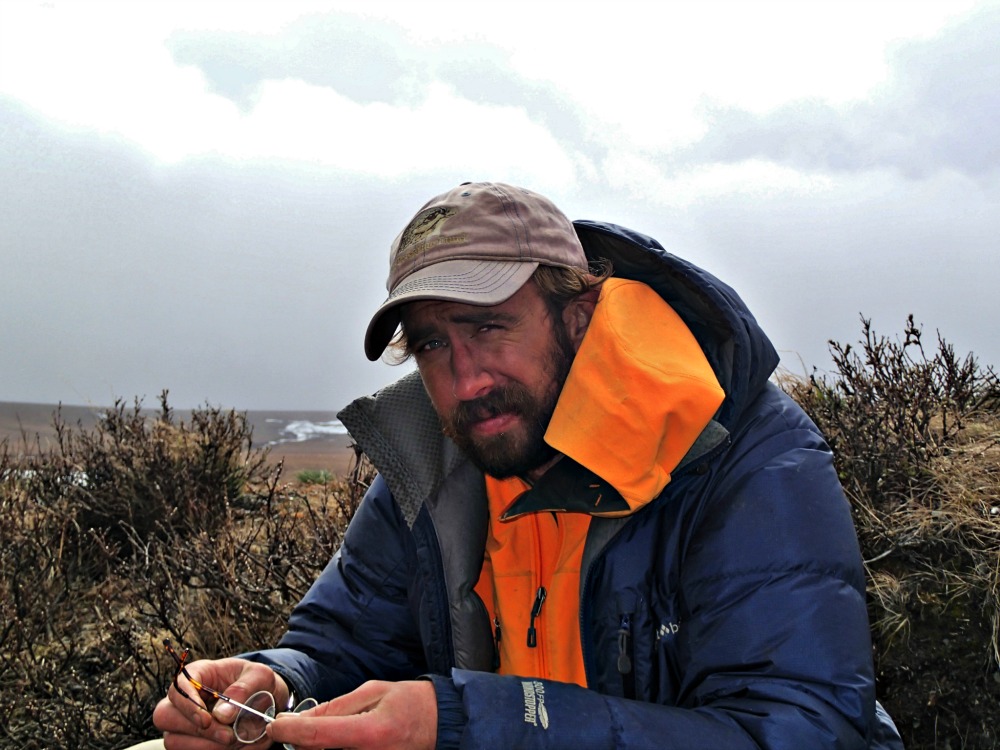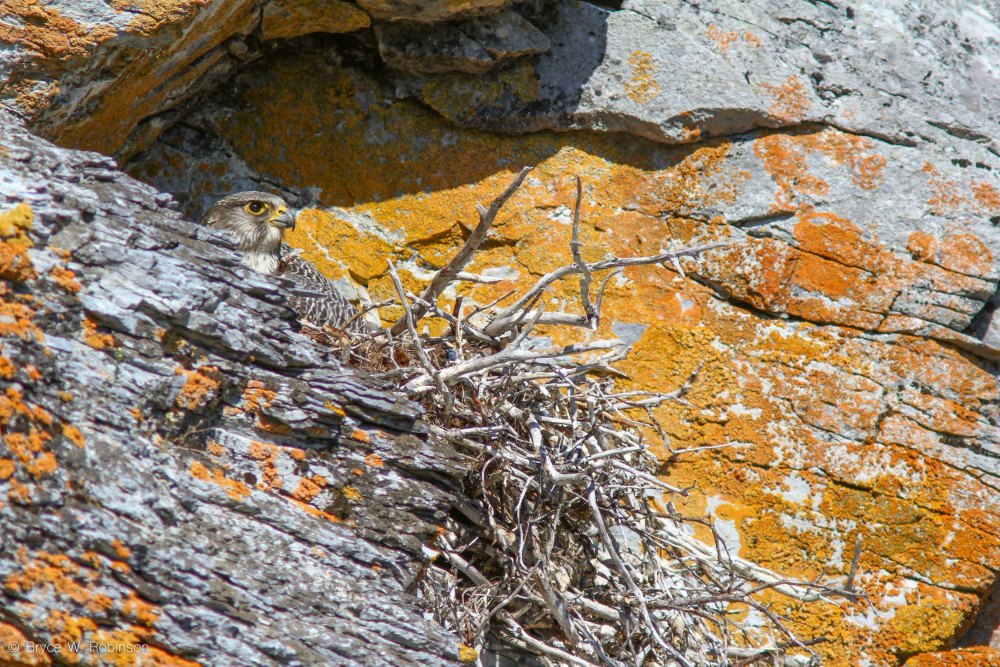The Seward Peninsula is spectacular by air, but the Gyrfalcon team is truly getting to know the habitat by slogging through it on the ground. Bryce Robinson leads the project for his master’s work at Boise State University on Gyrfalcon nesting ecology. I joined the project as a technician with a brand new bachelor’s degree in Wildlife Biology and a love for Alaska.
When I first met Bryce in Nome, I got the sense that I was joining a major endeavor. He seemed like a calm, cool biologist with the requisite beard and beanie, but when it comes to Gyrfalcons—and birds in general—Bryce is intense and dedicated.

Bryce Robinson shows his typical intensity as he photographs a Northern Shrike nest
When he isn’t actively watching birds in the field, Bryce talks about birds, draws them, or reads about them. It is easy to see how his passion led him to this difficult work in the Arctic. Without passion, this work would not be possible.
Bryce’s helicopter surveys showed us where the Gyrfalcons are nesting this year. Next we needed to hike across miles of tundra to reach them and install cameras at cliff nests before the eggs could hatch. In May, this is no easy feat; it means we walk through snowstorms, cross icy rivers, and flounder in deep snow banks.

Ellen Whittle stands at the point of no return: here the 6-wheel ATV could not pass
Bryce will not rappel into a nest in cold, rainy weather because of the sensitivity of developing eggs. This limitation protects the Gyrfalcons, but it also means that we can hike for hours to reach a nest, only to turn back when the weather changes.

Gyrfalcon work in the immensity of Alaska: not for the faint of heart
Weather is not the only obstacle we faced in the first few weeks. We hiked several miles to one site overlooking a river and waited in the wind and snow for an hour, hoping for a break in the weather. Finally, Bryce attempted to rappel off the cliff, which was more of a loose bank of mud with embedded rocks than a true cliff. Rock and dirt dislodged as he stepped down the bank and swirled back up around him in the intense wind. After a ledge gave way beneath him, Bryce decided to ascend back up. The falling mud had blackened his teeth. “I’m worried about kicking rocks down on the nest,” he said matter-of-factly. I was equally worried about rocks landing on Bryce.

Bryce looking discouraged after the dirt climb fiasco
We learned lessons from these failures. We could not change the conditions in Alaska, but we could adjust. Bryce borrowed Alpacka rafts from the Alaska Department of Fish and Game and we rafted across the high rivers that we could not wade. With a six-wheeled ATV, we rode rough two-track for miles until we reach walking distance of remote nests.

The handy 6-wheel ATV: every dollar of this expensive baby is needed to access Gyrfalcon nests.
Finally, we were rewarded with the chance to see Gyrfalcon nests up close. Seeing the first stick nest wedged on a narrow, exposed ledge, I realized that throughout our own struggles, the Gyrfalcons are attempting to raise their young. The falcon parents must keep their eggs warm and developing for 30-35 days, and they must eat enough to sustain themselves at the same time. The difficult environment means that few species can nest as early as the Gyrfalcon does in the Arctic.

What we live for: a female Gyrfalcon peers from her nest!
Bryce knows these birds like few other biologists do. He has taught me to pay attention to the details I had not seen before, like the stage of molt, which can signal the bird’s condition. Bryce notices everything about birds, to the point where he forgets to notice his own condition. He films and takes photos until his hands are numb with cold, and he will stay out past midnight to capture his subjects in a good light.
After only a few weeks, I am in awe of Gyrfalcons and the effort it takes to get a glimpse into their lives. I look forward to watching their progress over the next few months and sharing some of their spectacular beauty here on this blog.
written by Ellen Whittle in Nome, Alaska, 28 May 2015
photographs © Bryce W. Robinson and Ellen Whittle